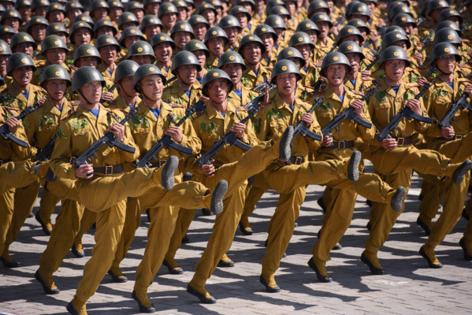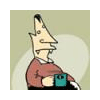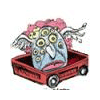Ukraine allies face limited options as North Korea troops arrive
Published in News & Features
Russia’s decision to bring North Korean troops to shore up its war-weary forces has Ukraine’s allies realizing they have few options to respond without escalating the conflict even more.
High-ranking South Korean officials are set to brief NATO and the E.U. in Brussels later Monday about North Korea’s plans to send as many as 10,000 soldiers to Russia. Over the weekend, U.S. President Joe Biden told reporters “we have options, it depends on what they do.”
Which option to employ may divide the U.S. and its allies. They will have to decide whether to match escalation with escalation over North Korea’s step, which officials say marks a turning point in Russia’s war on Ukraine as it broadens into an increasingly global one with more outside actors.
South Korea is considering whether to send weapons directly to Ukraine, reversing a policy banning lethal aid to the country at war, according to a senior South Korean official. Seoul has previously backfilled the U.S. for shipments it has made.
If some of Seoul’s vast stores of artillery shells started heading directly to Kyiv, alongside Pyongyang’s supplies to Russia, that would result in the war drawing upon two of the world’s largest artillery forces.
Lithuanian Foreign Minister Gabrielius Landsbergis said on social media earlier in October that a French idea raised earlier this year to send western personnel to Ukraine “should now be revisited, better late than never.” That idea previously ran up against concerns the trainers and other military personnel could be targeted by Moscow.
Another option for the U.S. would be to lift its restrictions on Ukraine on long-range strikes inside Russia. But that would force a rethink of what’s previously been a red line for Biden’s team.
Washington’s “underlying philosophy about the risk-benefit calculus when it comes to escalation versus advantage for the Ukrainians probably remains about the same,” said Richard Fontaine, chief executive officer of the Center for a New American Security in Washington.
Moscow and Pyongyang are already heavily sanctioned and allied weapons stocks are stretched thin. That leaves few ways in which the U.S. and Europe can impose costs over North Korea’s involvement without escalating the conflict even more. Defense Secretary Lloyd Austin said it would be a “very, very serious issue” if the North Korean troops participated in the war on Russia’s behalf.
Factoring into the allied calculus is the fact that today’s North Korean troops have never seen real combat, potentially limiting their effectiveness in aiding Russia.
Another option could revolve around existing conversations at NATO to let allies defend Ukrainian air space from bordering countries like Poland and Romania, one person familiar with the discussions said.
One official said the U.S. and Europe should have done more early on after North Korea initially started aiding Russia with missiles. Allies are also unlikely to be able to take any significant decisions until after the U.S. election on Nov. 5, the official added.
U.S. and European officials are still unclear how exactly the North Korean troops will aid Russia’s fight against Ukraine. National Security Communications Advisor John Kirby on Friday said it was likely that at least some of the soldiers could be deployed to Kursk, the Russian region where Ukrainian forces made gains this summer.
Pyongyang’s troops arrive in Russia at a time when Ukraine is also desperate for more manpower and as it tries to maintain its grip on the territory in Kursk to shore up its bargaining power for eventual talks with Moscow. Kyiv is also bracing for the cold season after Russia hammered its energy systems for months.
Russian President Vladimir Putin is likely to use the North Korean troops to shore up defensive lines within Russia in reaction to Ukraine’s Kursk offensive, instead of using Russian conscripts, which “helps him avoid a lot of discomfort politically at home,” said Ann Marie Dailey, a policy researcher on Russia and military issues at Rand. It also means Putin doesn’t have to pull troops from Ukraine’s front line in the east back to defend Kursk, she added.
But in terms of options for the U.S. and Europe, “the tools are the same tools that have been there all along,” including providing more military aid or tapping into underlying frozen Russian assets, Fontaine said.
--------
(With assistance from Justin Sink.)
©2024 Bloomberg L.P. Visit bloomberg.com. Distributed by Tribune Content Agency, LLC.







Comments